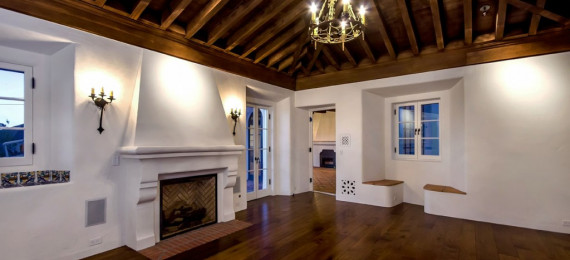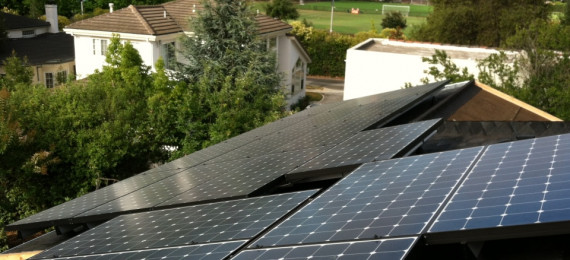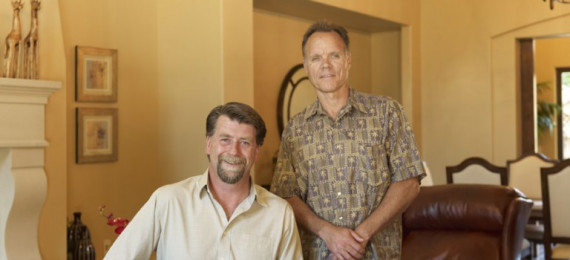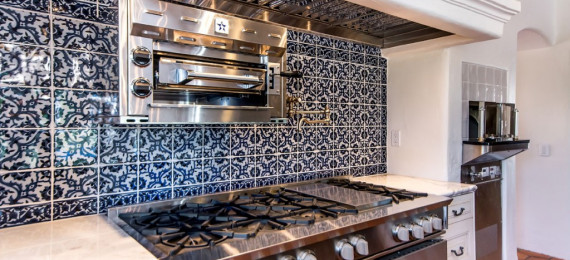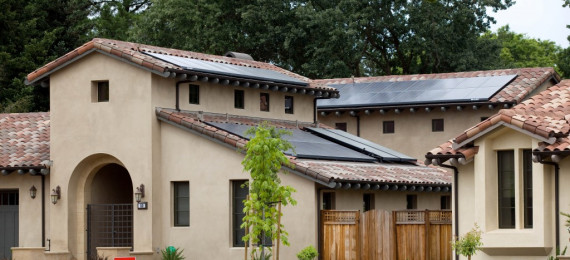These resources are from an archived version of our website. Want to see what we’ve been up to lately? Check out our new website.
Category: energy efficiency
Archives - Clarum Homes » Archive by category 'energy efficiency' (Page 6)
What Sustainable Materials Does a Passive House Use?
Posted by Clarum Homes on November 6, 2012 | Categories: custom homes, energy efficiency, guidebook, high performance homes, passive home | No comment
Sustainability at each and every step A home is only as sustainable as the materials used in its construction and the components on which it runs. At Clarum Homes, we care deeply about sustainability. In fact, our core purpose is to transform the way you live by creating greater comfort, greater health, and greater environmental sustainability. Our passive homes and high-performance, passive inspired homes do just that. Conservation in our components Passive homes are, by definition, energy-efficient; to attain certification, a passive home must meet the efficiency criteria defined by the International...
Read More
Solar Electric Power Systems
Posted by Clarum Homes on October 23, 2012 | Categories: custom homes, energy efficiency, high performance homes, Palo Alto, passive home | No comment
Harnessing the Sun Solar electric technology is fairly ingenious. With your rooftop tiled in solar panels, you can harness the sun’s radiation to power your home, charge a battery, and even earn a profit. Compared to the conventional alternative, a solar-powered home is not only more ecologically responsible; it’s also more financially savvy. Smart, Economical, Responsible Originally, solar electric was mainly used for spacecraft and satellites, and in the beginning, it was expensive. But that’s changed. With advanced technology, greater demand, and more efficient manufacturing techniques,...
Read More
The Clarum Vision: Transforming the Building Industry
Posted by Clarum Homes on October 8, 2012 | Categories: custom homes, energy efficiency, guidebook, high performance homes, passive home | No comment
What does it mean to build a green home? What’s the future of passive building? How does Clarum Home fit into the overall picture of home construction? Meet John Suppes (Clarum’s President) and Sean Misskelley (Director of Construction), discussing these and other questions. Clarum Homes is different than other home builders. Our difference is rooted in our core purpose: we work to transform the way you live. While the majority of the building industry continues to do just what it’s done for the last 40 years, Clarum Homes maintains a relentless commitment to lead the way in home...
Read More
Embodied Energy: A Measure of Sustainability
Posted by Clarum Homes on October 4, 2012 | Categories: energy efficiency, guidebook, passive home | No comment
What is Embodied Energy? Look at your house... your computer... the snack on your plate. How much did it cost? Now look deeper. For each of the goods (and services) that we purchase – from automobiles to groceries – there’s an invisible price tag behind the one that we can see. It’s the cost of embodied energy. Embodied energy is the sum total of the energy that went into the production of any good or service. Extraction of raw materials, transportation, manufacturing, installation – it all contributes to embodied energy, because without those things, the final product couldn’t...
Read More
What Does a High-Performance Home Cost to Build?
Posted by Clarum Homes on September 27, 2012 | Categories: energy efficiency, guidebook, high performance homes, passive home | 1 Comment
What Does a High-Performance Home Cost? Of course, it’s impossible to estimate the cost of any home without knowing all the variables, such as size and style. However, there are general patterns. "People are often surprised to learn that a high-performance home only costs 5-10% more than its conventionally-built equivalent," says Clarum president John Suppes. After several years, the high-performance home catches up, offsetting the difference in initial construction costs, and begins to pay for itself. How? By costing up to 90% less, month to month. At Clarum Homes, we build our high-performance...
Read More
What is LEED Certification?
Posted by Clarum Homes on September 24, 2012 | Categories: custom homes, energy efficiency, guidebook, high performance homes | No comment
What does it mean when a house is LEED certified? LEED stands for Leadership in Energy and Environmental Design. It is an internationally recognized, third-party rating system for green building design – a standard we're very familiar with here at Clarum. The U.S. Green Building Council (USGBC) is a non-profit organization committed to expanding sustainable building practices. The LEED certification program is the USGBC’s primary vehicle for promoting sustainable design and construction. The LEED system rates the environmental performance of a building. It is based on accepted energy and environmental...
Read More
What Makes a House Sustainable?
Posted by Clarum Homes on August 27, 2012 | Categories: custom homes, energy efficiency, guidebook | 2 Comments
The definition of sustainable “Sustainable” is an important and widely-used word, now more than ever. On the other hand, it’s also widely misused. So what does “sustainable” really mean when it comes to home-building? Sustainable literally means “able to continue without an end in sight.” Any finite resource which can be used up, or any practice that can’t continue indefinitely, isn’t sustainable. Unlike the word “green,” which covers anything that’s intended to support the health of the environment, “sustainable” is objective and very definable. What, then, is a sustainable...
Read More
Passive Homes and the Environment
Posted by Clarum Homes on August 13, 2012 | Categories: energy efficiency, guidebook, high performance homes | No comment
The cost of energy is rising rapidly – and not just in dollars. Our environment is paying the price as well: non-renewable energy consumption, carbon emissions, pollution, and inefficiency. All of these pressures make passive design a very timely and relevant notion. The Clarum approach to building passive and passive-inspired homes supports the health of our environment by consuming less energy, conserving non-renewable resources, and reducing our ecological footprint. Passive Homes Consume Less Passive homes represent today’s highest energy standard and can slash the energy consumption...
Read More
Net Zero? Why and How
Posted by Clarum Homes on July 17, 2012 | Categories: energy efficiency | No comment
Our last post covered what “Net Zero” means and whether a Net Zero house is on- or off-the-grid. So why is Net Zero such a good idea? And what does it take to achieve it? The “why” is easy: Net-zero homes are cheaper in the long run. True, they're more expensive upfront, but over their lifespan, they cost less: they're intensely efficient and you can say goodbye to your energy bills. You may be eligible for tax credits. The IRS and California offers incentives for energy-efficiency; local power suppliers may offer credits, too. At Clarum Homes, we use technologies that often qualify. Net...
Read More
Are Net Zero houses on- or off-grid?
Posted by Clarum Homes on July 3, 2012 | Categories: energy efficiency | 1 Comment
And what does Net Zero even mean? A Net Zero house is one that generates the same amount of energy it consumes, through renewable sources like sun, wind or water. For example, at Clarum Homes, we can tile the roof with solar panels, so your home converts sunlight into electricity. When able to produce all the energy it uses per year on-site, it's Net Zero. As such, the Net Zero homes we build don't have to be connected to the grid But that doesn't mean they can't be. On or Off? There are benefits to being connected. When on-site energy is abundant, you can harvest the excess and sell it to the city....
Read More

